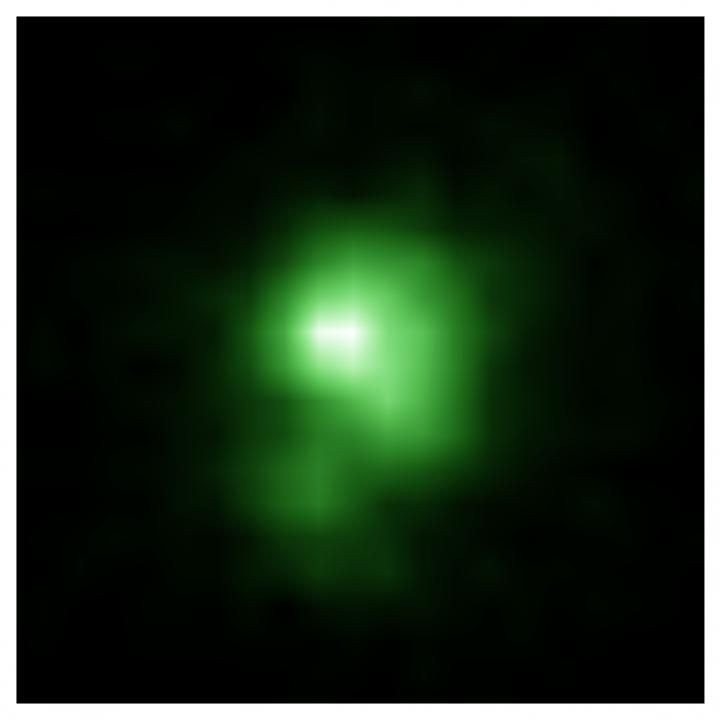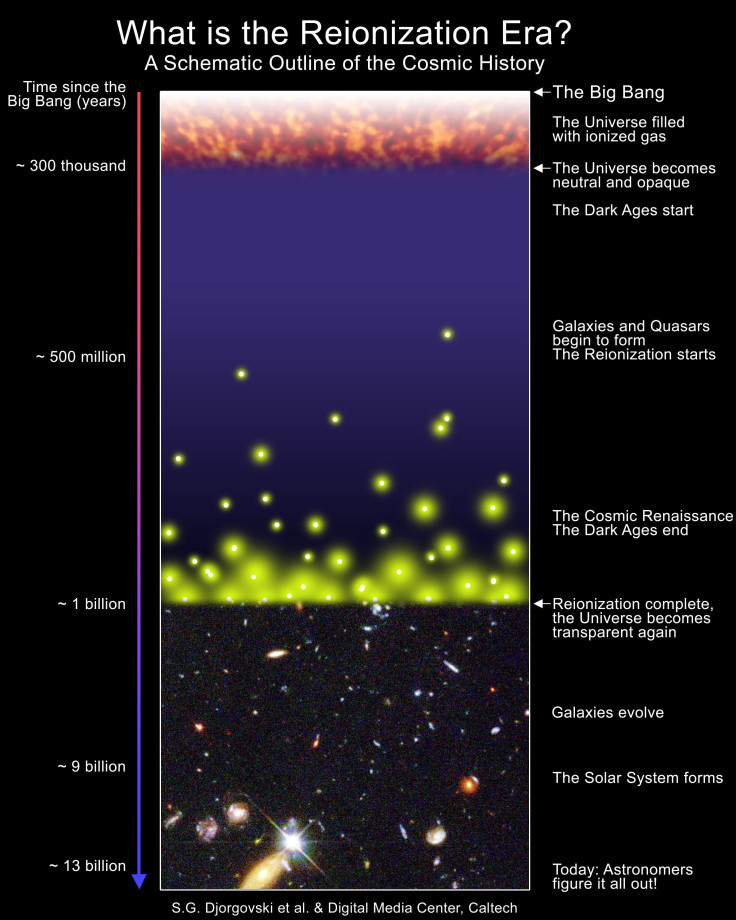'Green Pea' Galaxies May Hold The Key To Understanding The Early Universe

The universe began with a big bang followed by a great expansion. The subsequent creation of hydrogen and helium led to the dark ages of the universe, but something happened that caused hydrogen to heat up — the process known as ionization where superheated gases obtain a positive or negative charge — and usher the visible universe era.
All of this took place within a billion years after the big bang. A study released Wednesday shows that the first galaxies in the early universe may have been the catalyst behind cosmic reionization.
The dark ages of the universe comprised neutral helium, hydrogen, dark matter and normal matter. Gravity would soon pull all of this together to create the first stars. The creation of the first stars would pave the way for the first galaxies. The young stars and early galaxies were hot enough to strip electrons from the neutral gases. Cosmic reionization started out as a flashlight revealing what was out in the darkness. As more stars and galaxies formed, more gas was ionized. Soon, the lights were turned on and the early universe became visible.
"Though the Epoch of Reionization took place deep in the universe’s past, it lies at the very frontier of our current cosmological observations. The more researchers learn about this period, in fact, the more it reveals about the end of the cosmic dark ages, the first stars and galaxies and the structure of our universe," Stanford University's Kavli Institute for Particle Astrophysics and Cosmology explained.

Stars emit UV radiation and ionizing photons necessary to heat and strip surrounding gas. Galaxies were believed to have triggered cosmic reionization, but researchers had yet to find a galaxy emitting enough radiation necessary to reionize hydrogen. Galaxies need to eject the ionizing photons instead of absorbing the photons, according to the researchers from the University of Geneva.
The researchers focused on tiny galaxies known as "green pea" galaxies due to their compact size. These active star-forming galaxies located 1.5 billion and 5 billion light-years from Earth are similar to galaxies in the early universe. If these galaxies were emitting radiation that could heat and strip hydrogen, it's likely similar galaxies were doing the same thing 13 billion years ago.
The researchers found 5,000 green pea galaxies using the Sloan Survey's collection of more than 1 million galaxies. After finding potential candidates, the Hubble Space Telescope's ability to detect UV radiation was used to determine if any green peas were emitting radiation.
One such galaxy, J0925 — located 3 billion light-years from Earth — was emitting UV radiation and ejecting photons. This is just the first step in understanding what caused cosmic reionization in the early universe. The researchers hope to use Hubble for further observations of J0925 and other galaxies that could be emitting radiation.
© Copyright IBTimes 2025. All rights reserved.




















